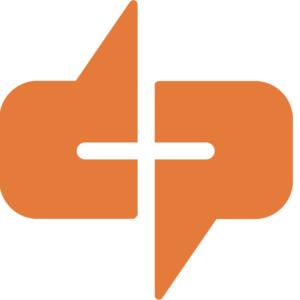By Maia Knox
It’s true what everyone tells you about your final months of college: they are hectic, celebratory, and nostalgic all at once. Yet, I also find myself at a crossroads of excitement and uncertainty.
The assurance of returning to campus next fall is gone, and I am faced with the daunting task of searching for post-graduation opportunities. Though I am confident that my time at Devine + Partners and my Villanova education have prepared me for a career in public relations, it’s hard to know where to begin looking in an always-changing industry.
One thing that has been on my mind as I embark on my job search is the different workplace models that companies have implemented since the COVID-19 pandemic forced us to rethink the traditional in-person model just four years ago. Is the future of the PR industry remote, in-person, or hybrid? Which model is best? And how do I know which one is the right fit for me?
As I contemplate the future of PR workplaces, it is essential to examine each model individually to understand its benefits, drawbacks, and implications for the industry.
The Remote Workplace
Remote work, loved by many for its flexibility, became increasingly prevalent during and immediately after the pandemic. Working virtually offers the freedom to structure one’s day, eliminates the commute, and provides a more focused work environment (for some people). It also cuts costs for businesses and can reduce companies’ carbon footprints.
However, remote work does have disadvantages. There’s growing evidence that suggests working remotely makes employees less focused, with Harvard Business Review noting that remote work can be up to 10% less productive. Virtual workplaces can also lead to feelings of isolation and detachment from colleagues, impacting collaboration and team cohesion. In an industry where relationships matter, this might be a flaw that outweighs the model’s benefits.
Despite these challenges, remote work has undeniably reshaped the PR landscape by eliminating the geographical constraints of the typical workplace and promoting a more flexible work culture that many employees prefer.
The In-Person Workplace
In-person workplaces have long been synonymous with vibrant energy and spontaneous collaboration that often outweigh the pain of commuting for employees. Benefits of working in-office include opportunities for forming strong interpersonal connections, real-time feedback and brainstorming sessions, and increased work-life separation.
However, the rigid structure of in-person workplaces can be limiting and increase stress, requiring employees to adhere to fixed schedules and long commutes. If there is one thing that the COVID-19 pandemic has highlighted, it’s the vulnerability of the traditional workplace to external disruptions. Thus, flexibility and adaptability are more important than ever to the modern PR industry.
The Hybrid Workplace
Enter the hybrid model – a middle ground that arguably combines the best of both worlds. Hybrid workplaces offer the benefits of in-person collaboration while also providing the flexibility of remote work. This model allows employees to choose when and where they work, balancing the need for face-to-face interactions with the convenience of remote arrangements when necessary or desired.
Hybrid work is by no means perfect. It suffers similar challenges to a fully remote model, such as a diminished workplace culture and impaired collaboration. Though disadvantages are still present in a hybrid workplace, they often occur to a lesser degree.
The main benefit of this model is that offering a more diverse range of working options promotes a healthy work-life balance and accommodates individual preferences and needs. Moreover, hybrid workplaces foster a culture of adaptability, a quality that is required now more than ever for professionals in the rapidly evolving PR industry.
While weighing the pros and cons is undoubtedly necessary for a soon-to-be college graduate like myself, I have found that drawing on my personal experiences has been the most valuable to my job search process. At my previous internship, I worked fully remote. Now, as a D+P intern, I work a hybrid schedule that allows me to work remotely two days and in-office one day of the week.
As I approach life post-graduation, I am lucky to have been immersed in both remote and hybrid work settings that have helped me understand what I value in a workplace. Despite the shift toward digital workplaces following the COVID-19 pandemic, I expect that in an industry as vibrant and human-centric as public relations, people will ultimately function best in a hybrid model, which teaches adaptability and allows employees freedom while maintaining the vital element of relationship-building required by the profession.
Rising Stars is a series of thoughts, reflections and perspectives by the interns at Devine + Partners. Maia Knox is a senior majoring in communications at Villanova University.


